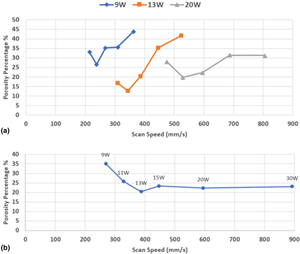Crossref Citations
This article has been cited by the following publications. This list is generated based on data provided by
Crossref.
2021.
Polymers and Additives in Extreme Environments.
p.
397.
Lv, Yifan
Thomas, Wayne
Chalk, Rodger
Hewitt, Andrew
and
Singamneni, Sarat
2021.
Experimental Evaluation of Polyphenylsulfone (PPSF) Powders as Fire-Retardant Materials for Processing by Selective Laser Sintering.
Polymers,
Vol. 13,
Issue. 16,
p.
2704.
Kobenko, Stepans
Dejus, Didzis
Jātnieks, Jānis
Pazars, Dāvis
and
Glaskova-Kuzmina, Tatjana
2022.
Structural Integrity of the Aircraft Interior Spare Parts Produced by Additive Manufacturing.
Polymers,
Vol. 14,
Issue. 8,
p.
1538.
Arzhakova, O. V.
Arzhakov, M. S.
Badamshina, E. R.
Bryuzgina, E. B.
Bryuzgin, E. V.
Bystrova, A. V.
Vaganov, G. V.
Vasilevskaya, V. V.
Vdovichenko, A. Yu.
Gallyamov, M. O.
Gumerov, R. A.
Didenko, A. L.
Zefirov, V. V.
Karpov, S. V.
Komarov, P. V.
Kulichikhin, V. G.
Kurochkin, S. A.
Larin, S. V.
Malkin, A. Ya.
Milenin, S. A.
Muzafarov, A. M.
Molchanov, V. S.
Navrotskiy, A. V.
Novakov, I. A.
Panarin, E. F.
Panova, I. G.
Potemkin, I. I.
Svetlichny, V. M.
Sedush, N. G.
Serenko, O. A.
Uspenskii, S. A.
Philippova, O. E.
Khokhlov, A. R.
Chvalun, S. N.
Sheiko, S. S.
Shibaev, A. V.
Elmanovich, I. V.
Yudin, V. E.
Yakimansky, A. V.
and
Yaroslavov, A. A.
2022.
Polymers for the future.
Russian Chemical Reviews,
Vol. 91,
Issue. 12,
p.
RCR5062.
Kim, Junyoung
Hwang, Uiseok
Chung, June‐young
Kim, Na‐Yeon
Nam, Jeonghyeon
Jung, Jinho
Sun, Hanna
Seol, Mina
Park, In‐Kyung
Suhr, Jonghwan
and
Nam, Jae‐Do
2022.
Low Dielectric Constant and Anisotropic Mechanical Properties of Dispenser‐Printed Polyetherimide Films Using Two‐Step Thermal Treatment.
Macromolecular Materials and Engineering,
Vol. 307,
Issue. 10,
Sankaran, Vigneshwaran
Rajan, A. John
Selvaraj, Senthil Kumaran
Jose, Swaminathan
Wilson, Vincent H.
Singh, K. Arjun
Sahayaraj, A. Felix
and
Patterson, Albert E.
2024.
Interlaminar tensile properties of raw and carbon fiber‐wrapped additively manufactured polyetherimide.
Polymer Engineering & Science,
Vol. 64,
Issue. 9,
p.
4406.
Tewani, Hridyesh
Hinaus, Megan
Talukdar, Mayukh
Sone, Hiroki
and
Prabhakar, Pavana
2024.
Architected flexible syntactic foams: Additive manufacturing and reinforcing particle driven matrix segregation.
Composites Part B: Engineering,
Vol. 275,
Issue. ,
p.
111315.
Zhou, Shenao
Wang, Zhengze
Luo, Yi
Zhang, Gang
Li, Guangxian
and
Huang, Yajiang
2024.
Microwave spheronization of polyetherimide powder in plasticizer liquids for laser powder bed fusion.
Additive Manufacturing,
Vol. 93,
Issue. ,
p.
104433.
